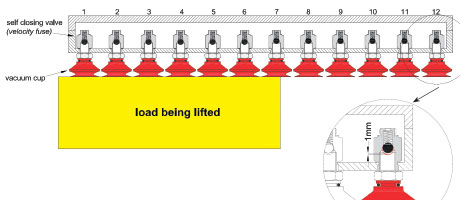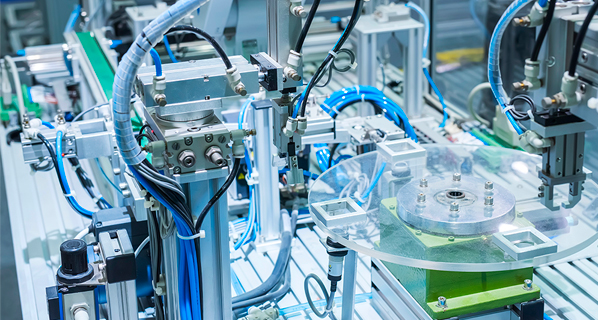IIoT and The Automation of Cylinders in the Fluid Power Industry
By Linda Caron, Global Product Manager,
Parker Hannifin

Addressing the problem
Cylinders have been the workhorse of industrial machinery since the late 1700s. These devices are used to transfer energy through linear motion and have undergone significant change over the years, including methods of construction to reduce size, materials used to reduce weight, and advanced sealing systems to minimize leakage. Plus, the use of composites and special engineered materials increase life expectancy by reducing wear. Yet, one design challenge remains: how to best determine the position of the piston.
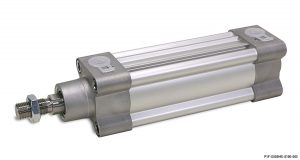 The demand of Industry 4.0
The demand of Industry 4.0
Industry 4.0 started the trend towards automation and data exchange in manufacturing technologies for a smart factory concept where we monitor physical processes in real time—in short, the computerization of manufacturing. Most notable of all these changes is the Industrial Internet of Things (IIoT), which is the integration of smart technology through interconnected sensors, instruments, and other devices networked together with computers, PLC’s, and network components. The economic benefit was clear – data collection, exchange, and analysis. The real benefit to most factories was the predictive maintenance piece and how to extend service life through maintenance and repair while reducing down-time and premature failures. Understanding the inner workings of an actuator became paramount to both safety and the function of machinery. As a result, industry grew closer to better solutions for position sensing.
Linda Caron is a Global Product Manager for Parker Hannifin Corporation in Factory Automation, Pneumatic Division, Motion Systems Group in Richland Michigan. Caron is a CMSE®, Certified Machinery Safety Expert (TÜV Nord) and has held various roles over 27 years in both Fluid Power and within the electrical industry, serving global markets from oil and gas to the food and beverage industry. Caron’s focus is on the IIoT space, network connectivity, and machinery safety.Historical methods
Many methods unfolded over the years on the topic of piston sensing (each industry wrought with its own challenges). The early days had no sensing capability. We were just happy the cylinder stroked and moved the load! Advancement took us to proximity style switches at a cost of about $300 a piece and had to be drilled into the head and cap of the cylinder. Applications requiring greater accuracy opted for the gun drilled LVDT whereby, a hollowed-out rod allowed for the insertion of a transducer. Quite an anomaly when you needed to rear mount with a clevis! Many methods were also utilized to sense displacement of pressure from the head or cap side of the piston to determine within reasonable accuracy the pistons location mid stroke. Reed switches were a cost-effective way to sense the piston with an embedded magnet on the piston itself. While cost effective, reed switches were limited to only end of stroke sensing. Smart technology demanded a better way.
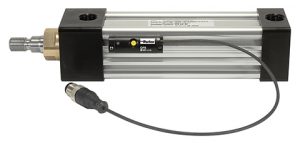 New methods
New methods
Continuous position sensing (CPS) has become popular today for outstanding performance to price. Available in digital or analog, these sensors are inexpensive and easy to install (with no cylinder modification) Environmentally, they are resistant to ingress, shock, vibration, and stray magnetic fields. The robust nature of this simple cost-effective product has made it a leader in machine technology. Instead of end of stroke, you can now adapt continuous positioning sensing from 32mm to 256mm (1.25” to 10”). CPS can be used anywhere and are very commonly sourced for industrial machinery. Simply plug them into an IO-Link master for easy real-time feedback on the network. This offers a tremendous advantage over the traditional linear positioning technologies. Safety is also enhanced for those applications where feedback of piston position is critical to indicate a safe, at rest or mid position of an actuator.
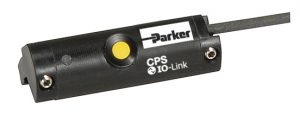 Conclusion
Conclusion
Now we can find the position of the piston and communicate with it quickly, easily, and with little cost. Coupled with the benefits of decentralized machine design and IO-Link technology, CPS enables a smart factory to be quickly born with easy integration and little cost. The average factory is easily adaptable with these types of components to be IIoT compliant or at least to know when their cylinder is in a safe position before starting a secondary operation. Most new cylinders are available with incredibly short lead times (often same day shipping) while new technologies like CPS provide incredible advantage for predictive maintenance, easy upgrades and enhanced safety.



